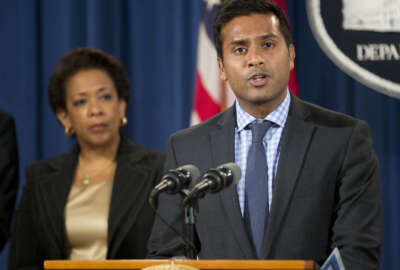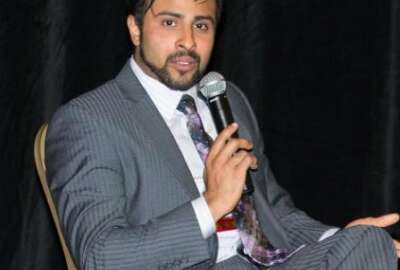
EPA using data science to save environment, support agencies
The Environmental Protection Agency is using predictive technology and positive word-of-mouth to promote its big data projects — in the hope of encouraging ot...
The Chesapeake Bay produces 500 million pounds of seafood per year, supports thousands of fish and birds, and sustains just as many plants and underwater grasses.
It also falls under the purview of 1,800 local government entities. So who gets a phone call when there’s a problem with the water?
“Think about the difficulty in trying to manage an ecosystem that has this much impact on the environment, where you have to deal with 1,800 different entities for the government,” said Robin Thottungal, chief data scientist and director of analytics at the Environmental Protection Agency. “If any of you have dealt with one agency, you know how difficult it is to make a change. Think about the challenge we have here.”
That’s where big data and predictive analytics come into play, Thottungal told an audience gathered on the first day of the Predictive Analytics World for Government’s 6th annual conference in Washington Oct. 17.
With the help of the Chesapeake Bay Program, EPA created a visualization of the areas of the Bay with the most environmental issues, Thottungal said, which also prioritized the local governments to reach out to for ongoing conservation efforts.
“This is one way I’m seeing data science enabling us to be much more effective in prioritizing some of these issues that we are trying to fight,” Thottungal said.
It also encourages the follow-up question of what’s next, he said.
“This is a natural way that I see some of these agencies starting to ask the question of, ok good, I am learning what is happening within my specific program area yesterday, today,” Thottungal said. “Now I want to go to tomorrow, which lends itself to classical techniques of prediction.”
The right direction
EPA is spearheading a number of data initiatives, such as challenging cities on how to best use air quality sensors, and building the NEPAssist tool, which Thottungal said was an example of successfully transforming EPA data into a publicly usable format.
But there is a hurdle to continuing this work, Thottungal told the audience, and that’s getting other agencies comfortable with these types of big data science.
“The question is, how do we take the agency from the idea of a binary state — this is yes, this is no — to a world where we are looking at 0 to 1 as a continuous spectrum, where you can say there’s a 50 percent chance that we are right or wrong,” Thottungal said. “That requires a different mindset, cultural change, and showing some earlier successes. That’s why I think we are doing the idea of more … innovative solutions so we can show the value in a shorter time frame without worrying about the end solution.”
Thottungal said it’s ok to fail while taking small steps, rather than waiting for the right answer. If you wait for the stars to align for that perfect solution, it will take years, he said, and by then data science will be gone and replaced by something else.
“The only way I think we can make some impact in the public sector would be by going through the idea of lean startup and small funding so we can learn what is the right direction,” Thottungal said.
Thottungal said his team is looking mostly at the cloud to help with its mission, and also brought in communications experts to help with their message.
Technologists love to talk about technology, Thottungal said, but upper management doesn’t care if they can cut the time on something from 1 day to 5 minutes.
“What they want to know is, how is that driving the mission,” Thottungal said, adding that his communication team members “help us create the right stories.”
Not only communication with management, but building a relationship among the agencies’ data officers is also important.
Thottungal said you can take a top-down approach, which basically turns into a directive for each agency to hand over data, or you can work with ground-level workers to solve some of their issues.
“They become the proponents of, ok, this was a good experience for us,” Thottungal said. “Then that creates the avalanche effect so that more people come down and say we want to do it.”
Copyright © 2024 Federal News Network. All rights reserved. This website is not intended for users located within the European Economic Area.




